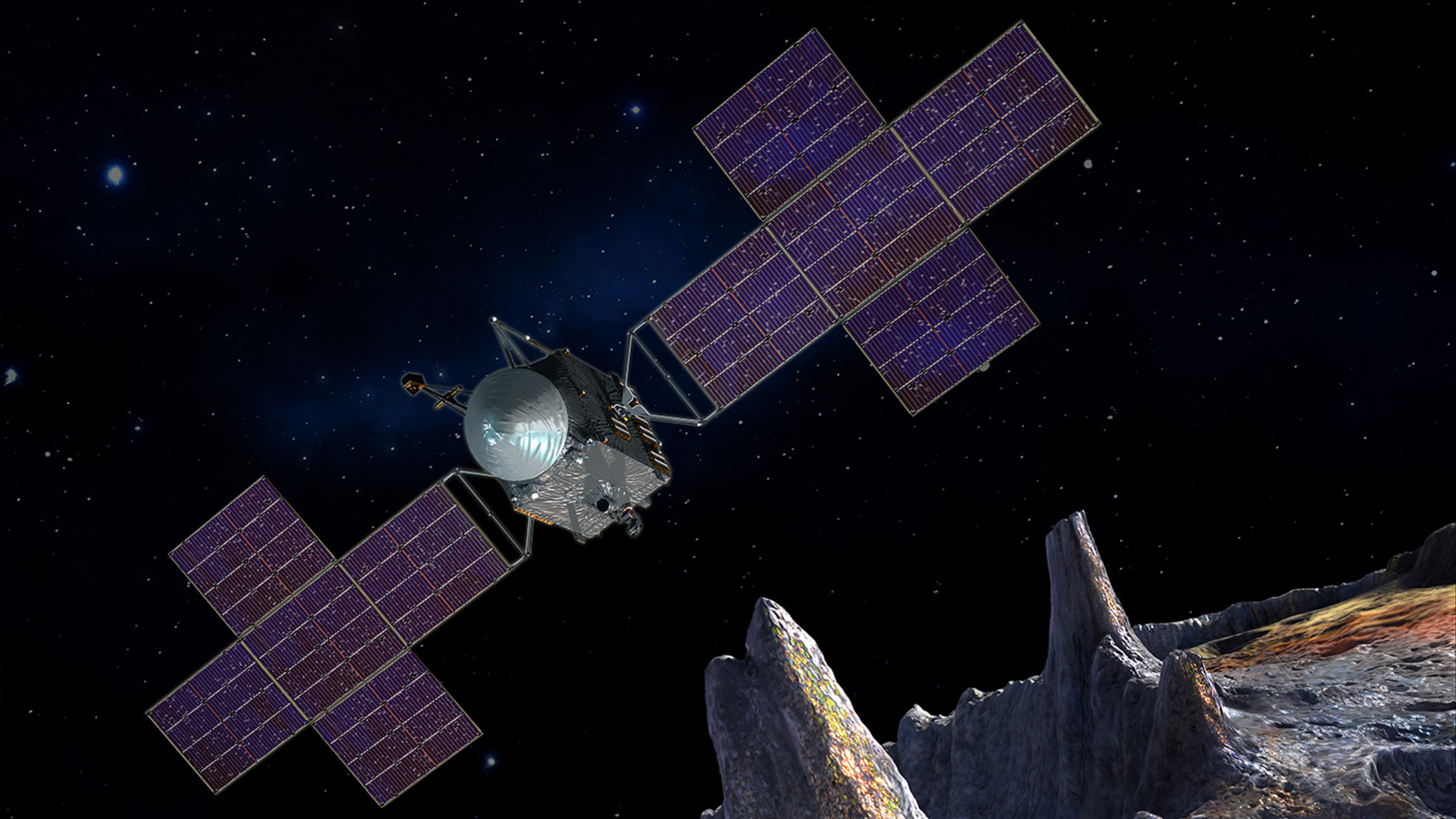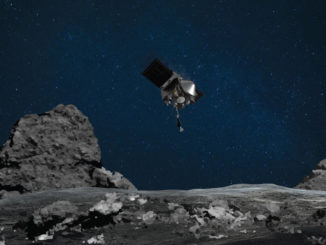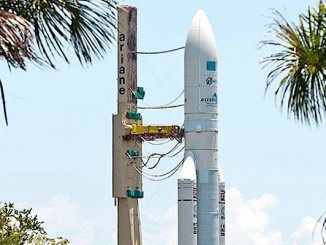
A NASA spacecraft set to explore a metallic asteroid for the first time will launch in 2022, a year earlier than originally planned, and reach its destination in 2026, four years ahead of schedule, giving ground teams a shorter wait for the mission’s scientific payoff and shaving $100 million off the project’s total cost, officials said Wednesday.
NASA officials announced in January their selection of the Psyche spacecraft and a robotic probe named Lucy from 28 mission proposals submitted by scientists as part of a competition to become the agency’s newest planetary exploration project.
The Psyche mission is named for its destination, the metallic asteroid Psyche, a mysterious world more than 120 miles (200 kilometres) in diameter mostly made of nickel and iron.
NASA staggered the launch windows for the Lucy and Psyche missions so it could afford both projects, spreading the development costs over different years in the space agency’s annual budget cycle. When NASA announced the missions in January, officials said Lucy will launch first, in October 2021, followed by Psyche’s departure in October 2023.
But managers devised a new flight plan for Psyche over the last few months to shorten the mission’s schedule and lifetime and save money.
“We challenged the mission design team to explore if an earlier launch date could provide a more efficient trajectory to the asteroid Psyche, and they came through in a big way,” said Jim Green, director of NASA’s planetary science division. “This will enable us to fulfill our science objectives sooner and at a reduced cost.”
Instead of launching in October 2023, Psyche will now blast off during a launch period extending from Aug. 6 through Aug. 26, 2022, according to Henry Stone, Psyche’s project manager at NASA’s Jet Propulsion Laboratory in Pasadena, California.
The Psyche probe’s updated trajectory will not pass by Earth for a gravitational speed boost as originally planned in 2024, but it will still use a flyby with Mars for a gravity assist in 2023 to spiral farther out into the solar system to approach the asteroid Psyche.
Psyche resides in the outer part of the main asteroid belt between the orbits of Mars and Jupiter, with an average distance of around 270 million miles (430 million kilometres) from the sun, three times farther than the Earth.
Instead of arriving at Psyche in 2030, as originally planned, the spacecraft will enter orbit around the metal asteroid in 2026.
“The biggest advantage is the excellent trajectory, which gets us there about twice as fast and is more cost effective,” said Lindy Elkins-Tanton, the Psyche mission’s principal investigator from Arizona State University in Tempe. “We are all extremely excited that NASA was able to accommodate this earlier launch date. The world will see this amazing metal world so much sooner.”
NASA did not release an estimate for the cost savings realised by the Psyche mission’s accelerated schedule, but Elkins-Tanton said the savings amount to more than $100 million.
“We are able to save about $100 million over the life cycle of the mission by launching in 2022 instead of 2023,” Elkins-Tanton wrote in an email to Spaceflight Now. “The majority of the savings comes from the shorter cruise enabled by the earlier launch date. We will arrive at Psyche in 2026 rather than 2030 because this is so much more efficient.”
Engineers at Space Systems/Loral, the manufacturer of the Psyche spacecraft, will add larger solar arrays to the probe to generate more electricity. The upsized solar panels are needed to power the craft’s electric ion thrusters to reach Psyche sooner.
Instead of a four-panel array on each side of the spacecraft, Psyche will have a more powerful five-panel X-shaped wing design, according to NASA.
“The cost savings are significant from a one year reduction in the development time and about a three-year reduction in cruise operations,” Stone wrote in an email. “The larger solar panels add mass, but total mass is still within the launch vehicle’s capabilities.”
NASA has not selected a launcher for Psyche, but United Launch Alliance’s Atlas 5 rocket and SpaceX’s Falcon 9 booster will compete for the mission’s launch contract.
The spacecraft will enter orbit around asteroid Psyche and study it for around 20 months for the first up-close scientific exploration of a metallic world.
Researchers want to know if Psyche is the leftover, exposed core from an early planet. The nickel-iron makeup of the asteroid is much like Earth’s super-dense, super-heated inner core, an environmental unreachable by humans or modern research tools.
Psyche’s topography and shape are still a mystery.
The Lucy mission, still set for launch in late 2021, will fly by a half-dozen Trojan-type asteroids left over from the formation of the outer planets. The Trojans, never before visited, are trapped in orbits ahead and behind of Jupiter’s path as it circles the sun.
The Jupiter Trojans may hold clues about the evolution of the solar system, especially the outer planets and the formation of Jupiter and its moons, scientists said. The frozen mini-worlds could be time capsules, keeping the characteristics they had more than 4 billion years ago, before scientists believe the immense pull of Jupiter’s gravity trapped them in their current locations.
The Lucy and Psyche missions come with cost caps from NASA’s Discovery program, a series of relatively low-cost missions exploring the solar system.
The space agency’s cost cap for the missions is $450 million each, a figure that does not include launch costs.
Email the author.
Follow Stephen Clark on Twitter: @StephenClark1.



